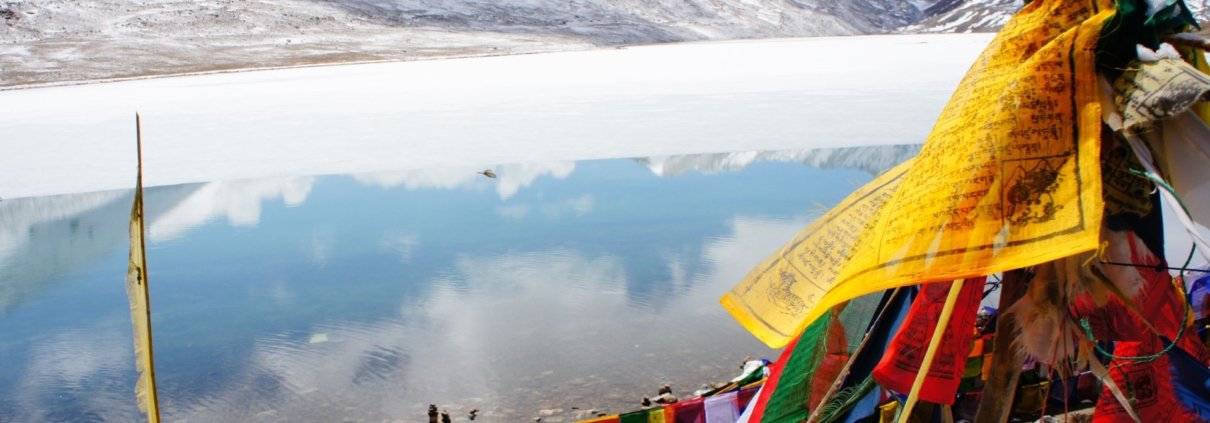Rinchenpong is a picturesque village located in the western part of Sikkim, India. Nestled at an altitude of about 5,500 feet, this charming destination offers stunning views of the Kanchenjunga range, lush green forests, and a serene environment that makes it an ideal spot for a peaceful retreat. If you’re looking to escape the hustle and bustle of city life and immerse yourself in nature, Rinchenpong should definitely be on your travel list.
Getting to Rinchenpong
By Air
The nearest airport to Rinchenpong is Bagdogra Airport, which is approximately 130 kilometers away. From the airport, you can hire a taxi or take a shared cab to reach Rinchenpong. The journey takes about 4-5 hours, depending on the road conditions.
By Train
The nearest railway station is New Jalpaiguri (NJP), located about 125 kilometers from Rinchenpong. From NJP, you can hire a taxi or take a shared cab to reach your destination. The travel time is roughly the same as from Bagdogra Airport.
By Road
Rinchenpong is well-connected by road to major cities in Sikkim and West Bengal. You can take a bus or hire a private vehicle from Gangtok, Siliguri, or Darjeeling. The roads are scenic but can be winding, so be prepared for a journey that might take a bit longer than expected.
Best Time to Visit Rinchenpong
Rinchenpong can be visited year-round, but the best time to visit depends on your preferences for weather and activities.
Spring (March to May)
- Weather: Pleasant with temperatures ranging from 10°C to 20°C.
- Highlights: Blooming rhododendrons, clear views of the Himalayas, ideal for trekking and outdoor activities.
Summer (June to August)
- Weather: Mildly warm with occasional showers, temperatures between 15°C to 25°C.
- Highlights: Lush green landscapes, fewer tourists, perfect for a quiet retreat.
Monsoon (July to September)
- Weather: Heavy rainfall, temperatures between 12°C to 20°C.
- Highlights: Verdant surroundings, waterfalls in full flow, but landslides can make travel difficult.
Autumn (October to November)
- Weather: Cool and clear with temperatures ranging from 10°C to 18°C.
- Highlights: Crystal clear views of the mountains, perfect for photography and trekking.
Winter (December to February)
- Weather: Cold with temperatures dropping to 0°C at night.
- Highlights: Snow-capped peaks, cozy evenings, great for those who enjoy cold weather.
Accommodation in Rinchenpong
Rinchenpong offers a variety of accommodation options ranging from budget homestays in Rinchenpong to comfortable resorts. Here are some popular choices:
- Homestays: Experience the local culture and hospitality by staying in a homestay.
- Hotels and Resorts: If you prefer more amenities, there are several hotels and resorts.
Things to Do in Rinchenpong
1. Explore Rinchenpong Monastery
One of the main attractions in Rinchenpong is the Rinchenpong Monastery, also known as Rishum Monastery. Built in the 18th century, it is one of the oldest monasteries in Sikkim. The monastery houses a statue of Ati Buddha and offers a peaceful ambiance with stunning views of the mountains.
2. Trek to Kaluk
Kaluk is a small village located near Rinchenpong and is known for its scenic beauty and tranquil environment. The trek from Rinchenpong to Kaluk is relatively easy and offers beautiful views of the surrounding landscapes. It’s a great way to experience the natural beauty of the region.
3. Visit Poison Lake (Biksthang Lake)
Poison Lake, locally known as Biksthang Lake, is a small but intriguing lake with a mysterious history. It is said that the lake was poisoned to prevent invaders from using its water. The lake is surrounded by dense forests and makes for a peaceful spot to relax and enjoy nature.
4. Hike to Rabindra Smriti Van
Rabindra Smriti Van is a beautiful forest area dedicated to the memory of the famous Bengali poet Rabindranath Tagore. The forest offers several hiking trails that lead to stunning viewpoints and serene spots perfect for a picnic or just relaxing in nature.
5. Discover Traditional Sikkimese Villages
Rinchenpong is surrounded by several traditional Sikkimese villages where you can experience the local culture and lifestyle. Take a walk through these villages, interact with the locals, and learn about their customs and traditions.
Local Cuisine
Sikkimese cuisine is a delightful blend of flavors influenced by Nepali, Tibetan, and Indian culinary traditions. When in Rinchenpong, be sure to try some local dishes:
- Momo: Steamed dumplings filled with vegetables or meat.
- Thukpa: A hearty noodle soup with vegetables or meat.
- Phagshapa: A spicy dish made with pork, radishes, and chilies.
- Gundruk: Fermented leafy greens, often used in soups and stews.
- Sikkimese Tea: Don’t miss out on tasting the locally grown tea, known for its unique flavor.
Tips for Traveling to Rinchenpong
- Pack Warm Clothes: Even during summer, the evenings can be quite cool, so it’s best to pack some warm clothes.
- Carry Cash: There are limited ATMs in Rinchenpong, so it’s advisable to carry enough cash for your expenses.
- Respect Local Customs: Sikkimese people are known for their hospitality, but it’s important to respect their customs and traditions.
- Travel Insurance: Consider getting travel insurance, especially if you plan to trek or engage in outdoor activities.
Day Trips from Rinchenpong
1. Pelling
Pelling is a popular tourist destination located about 35 kilometers from Rinchenpong. It offers several attractions including Pemayangtse Monastery, Rabdentse Ruins, and the famous Khecheopalri Lake. The drive to Pelling is scenic and makes for a perfect day trip.
2. Darap Village
Darap is a quaint village located near Pelling and is known for its traditional Limboo culture. You can explore the village, visit traditional houses, and learn about the Limboo community’s way of life. It’s a great place to experience rural Sikkimese culture.
3. Yuksom
Yuksom is a historic town located about 45 kilometers from Rinchenpong. It was the first capital of Sikkim and is known for its historical significance and natural beauty. Major attractions include Dubdi Monastery, Norbugang Coronation Throne, and Tashiding Monastery.
Wildlife and Nature
Rinchenpong and its surrounding areas are rich in biodiversity. The region is home to several species of flora and fauna, making it a great destination for nature lovers.
- Bird Watching: Rinchenpong is a paradise for bird watchers with a variety of bird species including the Himalayan Monal, Red-billed Leiothrix, and Rufous Sibia.
- Flora: The region is known for its rhododendron forests, orchids, and a variety of medicinal plants.
Cultural Festivals
Sikkim is known for its vibrant cultural festivals, and if you time your visit right, you might get to experience some of them in Rinchenpong.
- Losar: The Tibetan New Year, celebrated with much enthusiasm and traditional rituals.
- Saga Dawa: A significant Buddhist festival marking the birth, enlightenment, and death of Lord Buddha.
- Bumchu: Held at Tashiding Monastery, this festival involves the opening of a sacred vase believed to predict the future.
Sustainable Tourism
Rinchenpong is a relatively untouched destination, and it’s important to practice sustainable tourism to preserve its natural beauty and cultural heritage.
- Minimize Waste: Carry reusable water bottles and bags to reduce plastic waste.
- Respect Nature: Stick to marked trails and avoid disturbing wildlife.
- Support Local: Buy local products and support local businesses to contribute to the community’s economy.
Conclusion
Rinchenpong is a hidden gem in Sikkim that offers a perfect blend of natural beauty, cultural richness, and serene ambiance. Whether you’re a nature lover, a cultural enthusiast, or simply looking for a peaceful getaway, Rinchenpong has something to offer. Plan your visit to this charming village and experience the tranquility and beauty of one of Sikkim’s most beautiful destinations.




Leave a Reply
Want to join the discussion?Feel free to contribute!